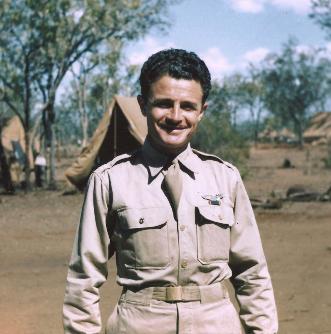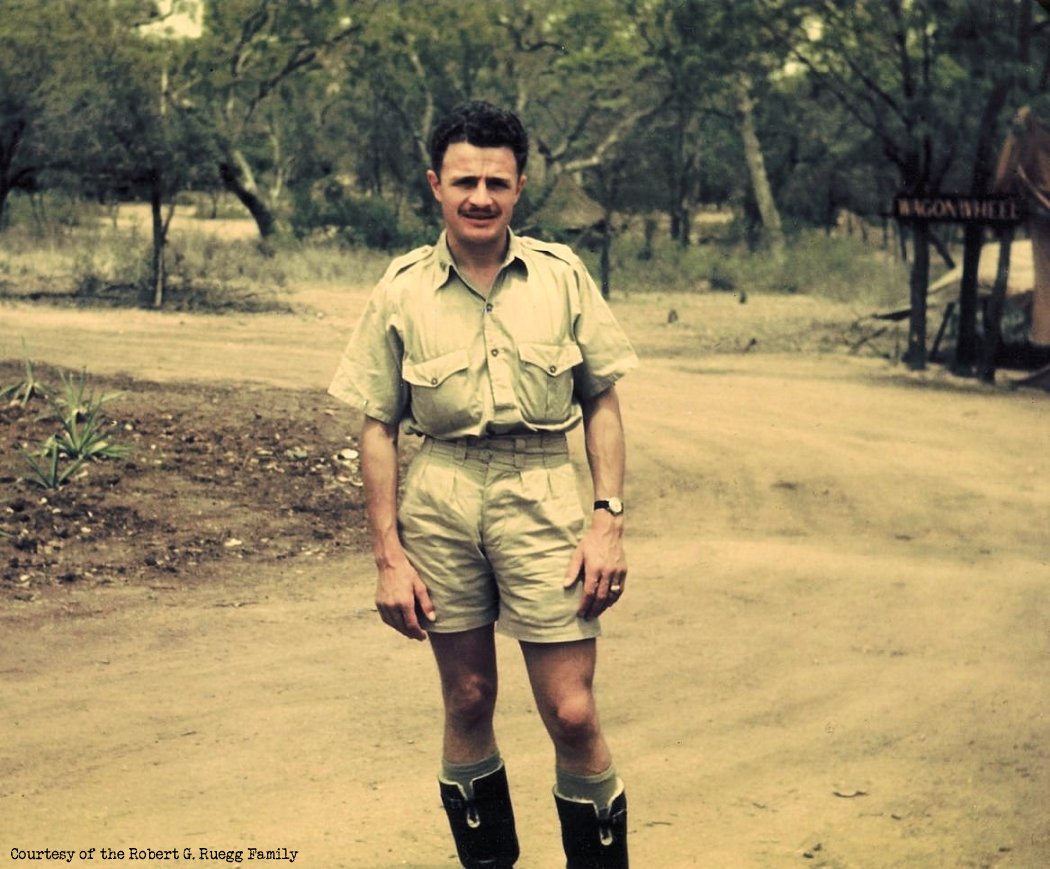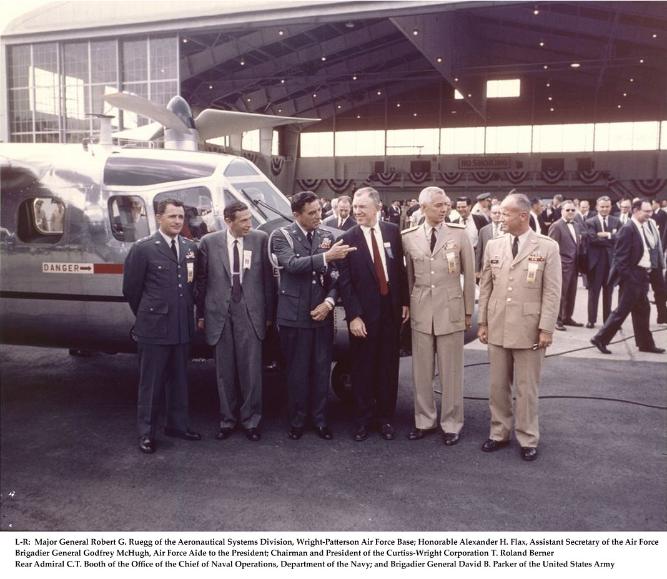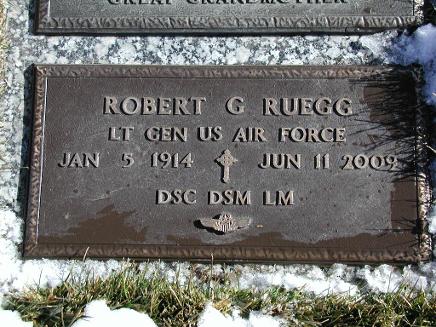Roll-out ceremonies of the X-19 VTOL (Vertical Take Off and
Landing) aircraft. Six men representing the three branches of the
military and the Curtiss-Wright Corporation stand in front of the X-19.
Identified as standing left to right are: Major General Robert G. Ruegg
of the Aeronautical Systems Division, Wright-Patterson Air Force Base;
Honorable Alexander H. Flax, Assistant Secretary of the Air Force;
Brigadier General Godfrey McHugh, Air Force Aide to the President;
Chairman and President of the Curtiss-Wright Corporation T. Roland
Berner; Rear Admiral C.T. Booth of the Office of the Chief of Naval
Operations, Department of the Navy; and Brigadier General David B.
Parker of the United States Army. A group of unidentified men stand in
the background. The aircraft was constructed by the Curtiss-Wright
Corporation of Wood-Ridge, New Jersey, under a tri-service agreement
between the Army, Navy, and Air Force. Mr. Berner sent this photograph
and one other to President John F. Kennedy with a letter dated August
13, 1963, expressing the Corporation's desire to develop the plane into a
Presidential aircraft.
Born in Gresham, Ore., in 1914, General Ruegg is
a descendant of pioneer grandparents who crossed the plains in wagon trains in
the 1860s to settle in the West. He attended elementary and high schools in
Nampa, Idaho, and returned to Oregon to study at the Oregon Institute of
Technology and graduated from Oregon State College with a bachelor of science
degree in 1939. He was a member of the Reserve Officers Training Corps from
1934 to 1939 and was commissioned a second lieutenant in the Field Artillery
Reserve in May 1939. He entered flying school in August 1939 and received his
pilot wings and appointment as second lieutenant in the Army Air Corps Reserve
in May 1940.
His first assignment after flying school was
with the 27th Bombardment Group, Barksdale Field, La., as pilot and engineering
officer, then as communications officer and airplane commander with the group
at Savannah Air Base, Ga.
In November 1941 General Ruegg went to the
Philippine Islands to serve as flight leader, and deputy and acting squadron
commander with the 3d Bombardment Group. He served in Northern Australia and
New Guinea, where he saw action against the Japanese and was awarded the
Distinguished Service Cross for extraordinary heroism.
General Ruegg returned to the United States in
1942 and was assigned to Wright Field, Ohio. There he was in the Flight Test
Division as test pilot; chief, Bomber Branch; assistant deputy for operations,
design and development; assistant chief (later chief), Operations Sub-Division.
He interrupted these duties to attend the Army Air Forces Engineering School in
1944.
In August 1947 he entered the Air Command and
Staff School, Maxwell Air Force Base, Ala., and graduated in July 1948. He was
then assigned to the Alaskan Air Command, first as assistant deputy, then as
deputy chief of staff, operations.
General Ruegg returned to Wright-Patterson Air Force Base, Ohio, in August 1950,
for assignment as assistant chief and later chief, Aircraft Laboratory.
He went to Washington, D.C., in August 1953, and after attending the Industrial
College of the Armed Forces, he became senior Air Force liaison officer in the
Office of the Assistant Secretary of Defense for Research and. Development. In
November 1955 he was appointed deputy director of procurement and production,
Office of the Deputy Chief of Staff, Materiel, Headquarters U.S. Air Force, and
became director in July 1957. In January 1959 General Ruegg became deputy
director for logistics, J-4, Organization of the Joint Chiefs of Staff.
In September 1960 he returned to Wright-Patterson Air Force Base, Ohio, as
Director of Procurement and Production, Headquarters Air Force Logistics
Command, and in July 1962 assumed command of the Aeronautical Systems Division,
Air Force Systems Command.
In July 1964 General Ruegg assumed duties as assistant deputy chief of staff
for systems and logistics, Headquarters U.S. Air Force, and in August 1967 he
became the deputy chief of staff for systems and logistics. He was appointed
commander in chief of the Alaskan Command in August 1969 with headquarters at Elmendorf Air Force
Base, Alaska . He was responsible for all military operations of this unified
command which is composed of components of the Army, Navy and Air Force in the
state of Alaska.
His military decorations include the Distinguished Service Cross, Distinguished
Service Medal and the Legion of Merit. He is a command pilot.








